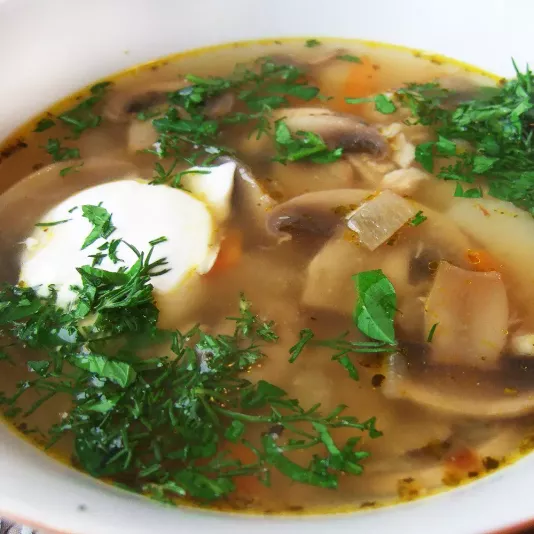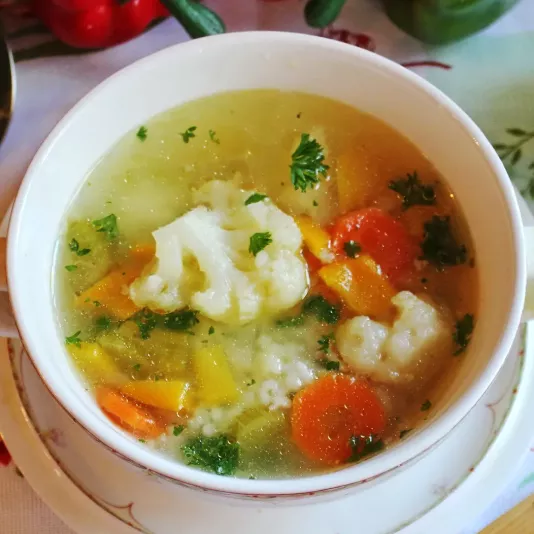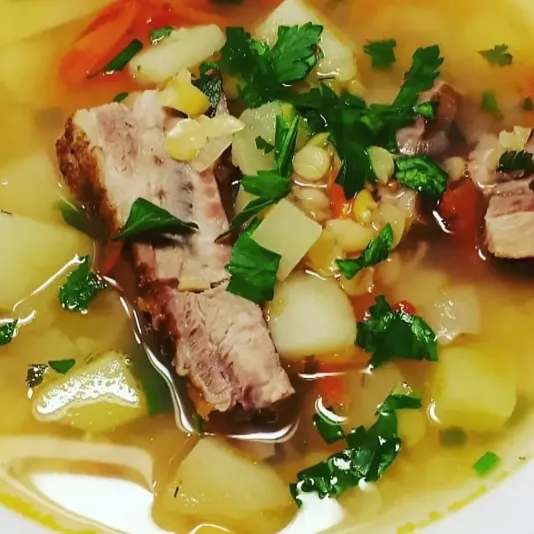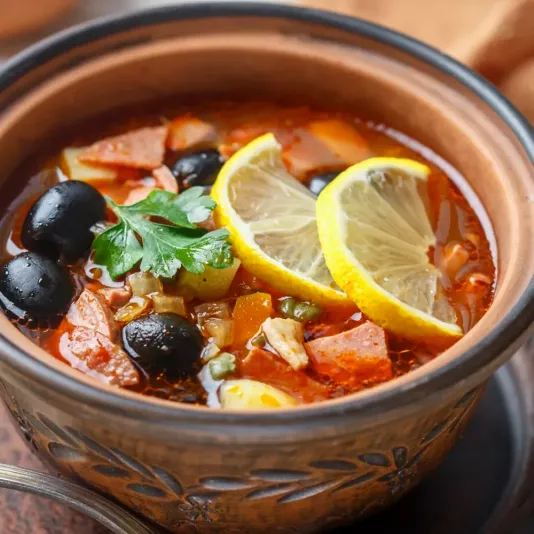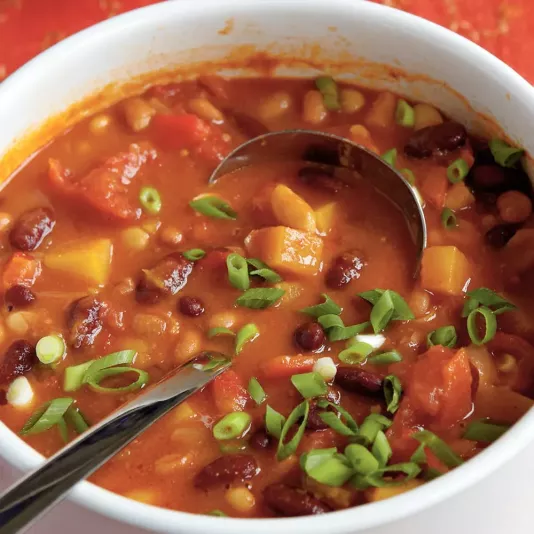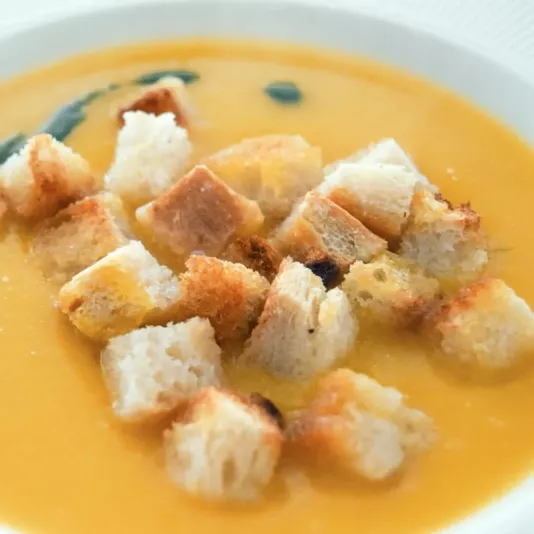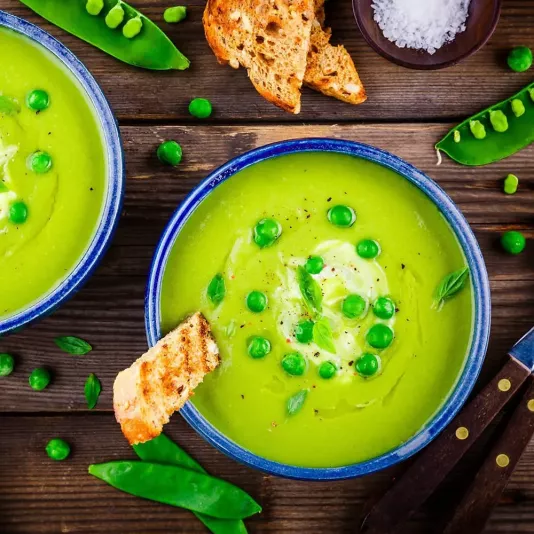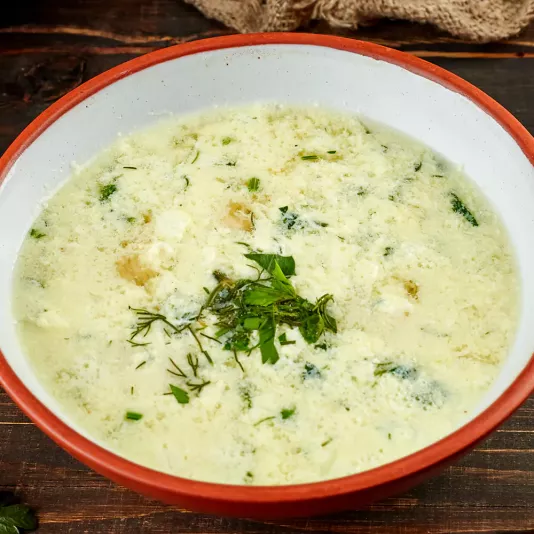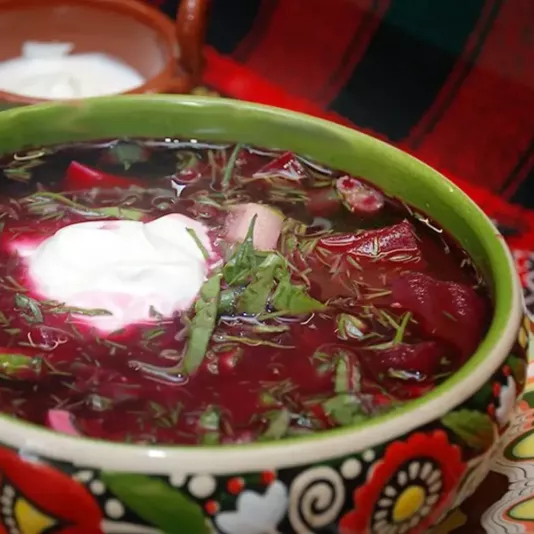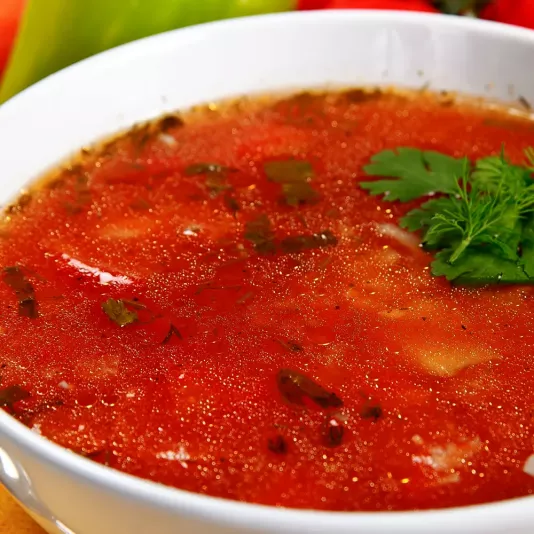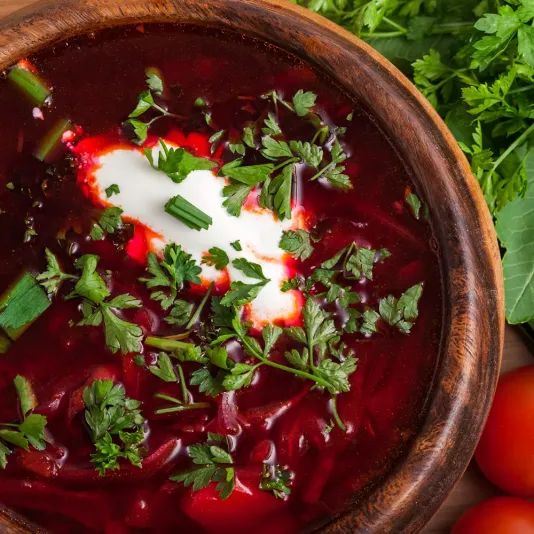Soups
Soups are the foundation of the daily diet, which I consider an integral part of home cooking. Over the years of cooking, I have become convinced that a properly made soup not only warms but also maintains nutritional balance. The most important thing is choosing the base: a strong meat broth, a light vegetable one, or a rich mushroom one. Each has its own character, so it is important to consider the season and the family’s mood. In summer, I often make light vegetable versions, and in winter – thick soups with legumes or grains. The main rule I follow is not to overcook the ingredients so as not to lose their natural aroma and texture. Everything should come together into one warm, balanced composition that nourishes and delights. I always add a pinch of fresh herbs before serving – it enlivens the flavor and emphasizes the naturalness of the dish.
Soup Recipes
The soups I make always reflect my sense of harmony between flavor and texture. I believe that a good soup starts with the base – a broth prepared without haste. The meat should be simmered over low heat so that the liquid remains clear and the fat rises gradually. If I want a more pronounced taste, I add roasted onions or carrots – they enhance the aroma and give depth. For vegetable soups, the main thing is not to overcook the ingredients so that each keeps its shade in the overall flavor. I always let the soup rest for a few minutes after cooking – this stabilizes the broth’s structure and makes the taste harmonious. Sometimes I add a spoonful of butter before serving: it softens the flavor and adds a touch of homely comfort. In my experience, even a simple soup can become a celebration if cooked with attention and calmness, without being distracted by trifles.
Classic Homemade Soups
Over the years of culinary practice, I have learned to distinguish soups that never go out of style. These are borscht, chicken broth, vegetable soup, and lentil soup – simple yet always appropriate. In classic recipes, what matters is not the number of ingredients but the sequence of actions: properly sautéing the vegetables, adding salt at the right moment, and controlling the boiling temperature. If the broth is cloudy, it means the heat was too high. If the vegetables lost their shape, they were overcooked. Mastery lies in such small details. I always remind myself that classics don’t tolerate haste. A well-cooked soup has a natural sheen and a gentle aroma that can be recognized even from the next room. And when the family gathers at the table, I see how even the simplest soup creates a feeling of coziness – that’s why I consider it the best expression of home cooking.
Secrets of Making the Perfect Broth
Broth is the heart of any soup. I always start with cold water so that the meat gradually releases its flavor. I skim the foam slowly, and after boiling, I reduce the heat to a minimum. The best result comes from slow simmering – at least two hours. If I want a richer color, I add a piece of roasted onion. For a vegetable version, the main thing is balance: not to overload the broth with root vegetables, as it will become too sweet. In my experience, spices should be added only at the end to preserve their freshness. I always strain the finished broth – this guarantees purity of taste. It’s also important to let it cool naturally without sudden temperature changes and only then use it for soup. If I plan to store the broth, I pour it into portions and freeze it – this way, I always have a base for a quick dinner.
Vegetable Soups and Their Varieties
Vegetable soups are the most convenient for everyday meals. I cook them in a light broth or simply in water, using seasonal produce. In spring – green peas and spinach, in summer – tomatoes and zucchini, in autumn – pumpkin and potatoes. Over the years, I have learned to combine vegetables so that the flavor remains balanced even without meat. The main thing is not to throw everything in at once: each ingredient has its own cooking time. I put carrots and potatoes first, greens only at the end. If the soup seems too light, you can add a little cream or a spoon of sour cream. Such a soup always turns out tender, aromatic, and easy to digest. It’s perfect for a daily menu, especially in the warm season. I often vary the seasonings – adding basil, oregano, or a bit of garlic to create a new flavor accent without changing the main recipe.
Cream Soups and Pureed Dishes
Cream soups did not appear in my diet immediately, but now I make them often. They are smooth, uniform, and have a special texture that I achieve using a blender or sieve. The best options are pumpkin, cauliflower, or broccoli – they create a thick base. After blending, I always return the soup to the heat and add a bit of cream or butter for smoothness. It’s important not to overheat – otherwise, the flavor becomes flat. It’s best served hot, with croutons or seeds for texture contrast. Cream soups are convenient because even leftovers can be used the next day by diluting with broth and reheating. This is a practical dish I recommend to those who value simplicity and comfort. Sometimes I add a few drops of lemon juice or grated cheese – they enhance the taste and make the texture even more pleasant.
Soups for Special Occasions
There are soups I make only on festive or chilly days. These are fish soup, mushroom soup with pearl barley, and thick beef soup with root vegetables. Such dishes require more attention but reward you with deep flavor. I always cook them in a large pot so there’s enough for a few days – they taste even better the next day. The main thing is not to oversalt, because the flavor concentrates when reheated. For serving, I like to add a few drops of lemon juice or fresh herbs – it refreshes the aroma. Over the years, I have realized that soups can create an atmosphere of calm and home warmth, especially when it’s cold outside and the house smells of hot broth and fresh bread. I often cook them in clay pots – this makes the taste deeper, and the presentation looks truly heartwarming.
